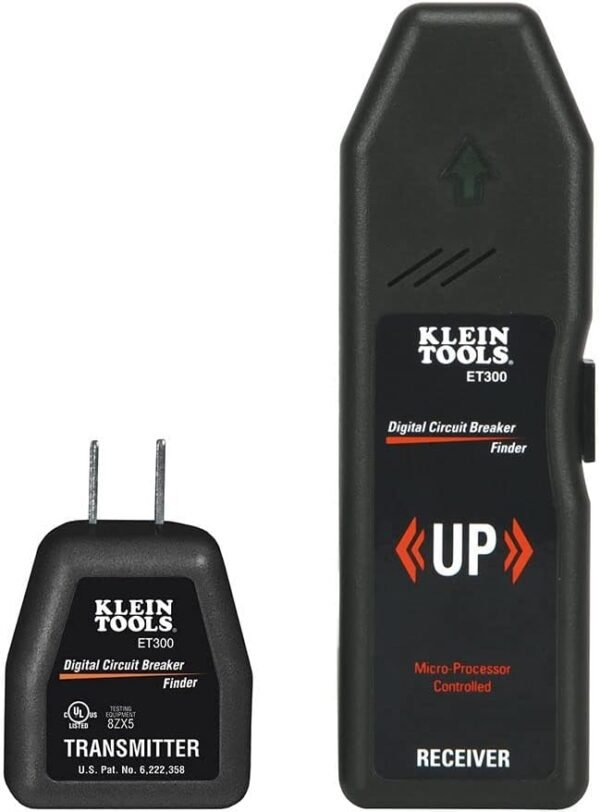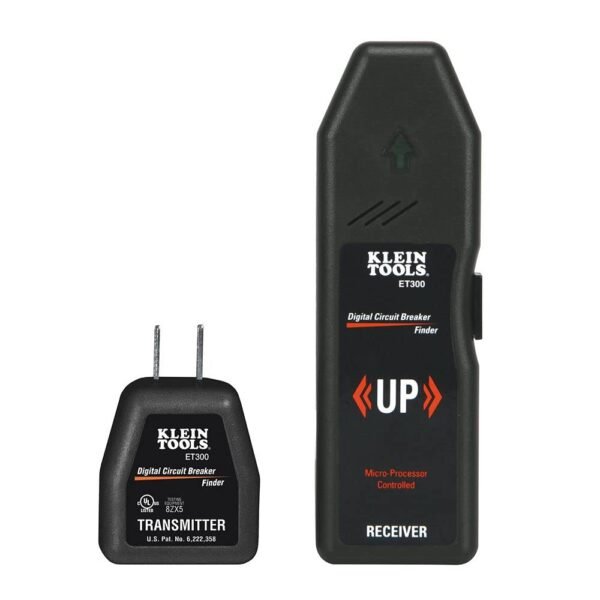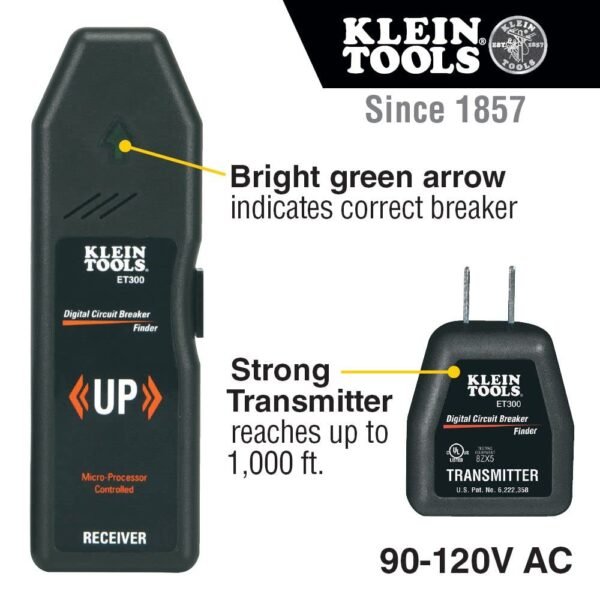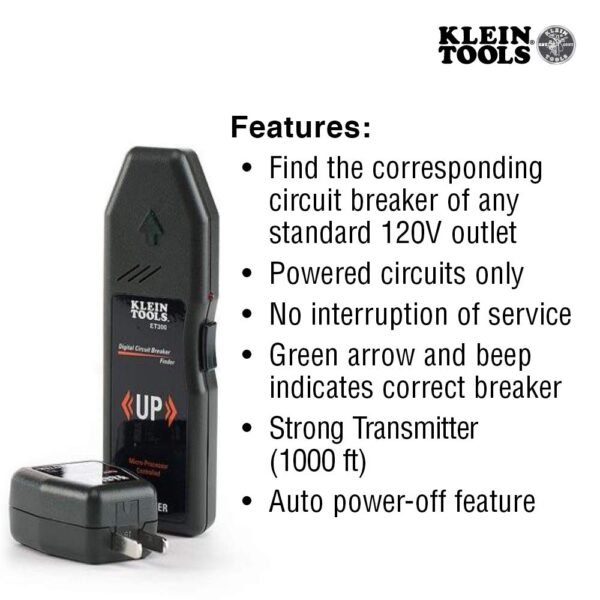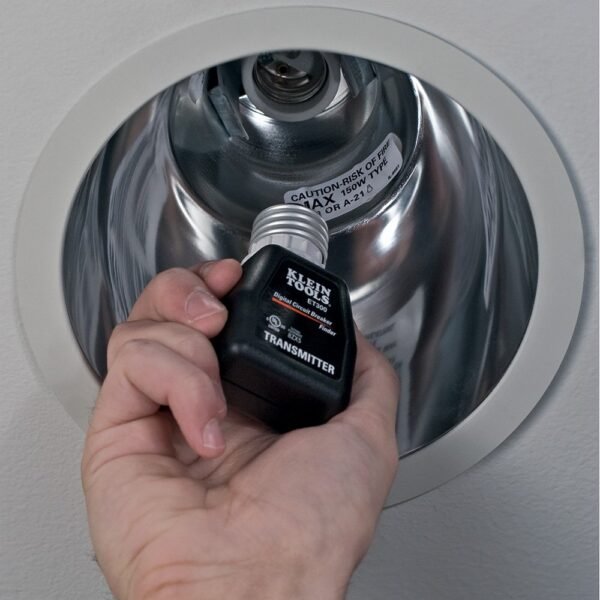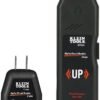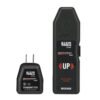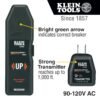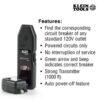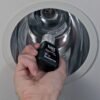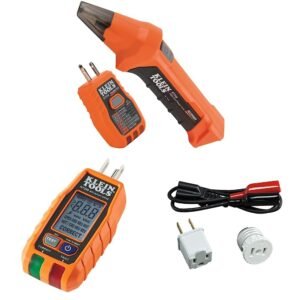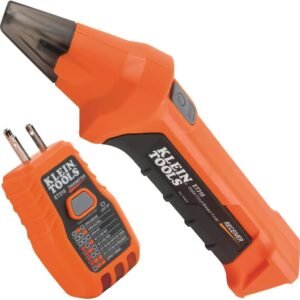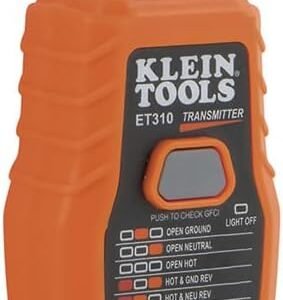Klein Tools ET300 Circuit Breaker Finder Review Accurate and Reliable for 120V Outlets
Klein Tools ET300 Circuit Breaker Finder Review Accurate and Reliable for 120V Outlets
- Quick and accurate identification of circuit breakers with a flashing arrow indicator that simplifies the process.
- Strong transmitter range up to 1000 feet ensures reliable detection even in large or complex setups.
- Auto power-off feature significantly extends battery life, reducing the need for frequent replacements.
- Microprocessor control enhances the precision and reliability of circuit breaker detection.
As an Amazon Associate I earn from qualifying purchases.
Description
Highlights of the Circuit Breaker Finder’s Design and Build
Testing the Klein Tools ET300 Circuit Breaker Finder gave me a solid sense of how thoughtfully crafted this tool is. It weighs just 3.2 ounces and fits comfortably in one hand, making it incredibly portable for everyday use. The compact size, about 0.5 inches thick, means it slips easily into my tool bag without adding bulk. The original version’s color and simple layout keep things straightforward—no flashy distractions, just functional design. The flashing arrow indicator is a particularly clever feature; it lights up clearly when you’ve hit the right breaker, which saved me from needless guesswork and frustration. Also, the auto power-off feature is a neat energy saver, so I didn’t have to worry about draining the lithium-ion battery accidentally.
Positive Features That Make Life Easier
There are several perks to this circuit breaker finder that impressed me quite a bit:
- The transmitter’s strong signal reaches up to 1000 feet, which means I could test circuits in different parts of my house without dragging the tool all over.
- It works on any 120V standard electrical outlet, making it versatile for most residential wiring situations.
- The microprocessor control enhances accuracy, reducing false hits or missed breakers.
- Battery life management is smart with the auto power-off, adding convenience.
- Klein Tools’ reputation for durability and quality craftsmanship is evident in the solid feel of the device.
Overall, these winning points combine to create a reliable, user-friendly experience that’s perfect for both professionals and DIY enthusiasts.
Areas of Concern That You Should Consider
Despite the many positives, some downsides caught my attention during my hands-on use:
- The tool requires a 9V lithium-ion battery, which, although included, might be a bit tricky to replace in the future depending on availability.
- While the flashing arrow indicator is helpful, in very bright environments or poorly lit breaker panels, it can be a little harder to see.
- This device is designed strictly for 120V outlets, so it’s not suitable if you need to identify breakers on 240V circuits or specialized outlets.
- The lack of detailed measurement accuracy information means I had to rely heavily on trial and error for tricky panels.
- I missed a more comprehensive accessory kit included in the package; the adapter and clips are sold separately, which adds to the overall cost.
These limitations are important to weigh if your electrical needs are more specialized or if you require a tool with multi-voltage capabilities.
Performance and Usability in Real-World Scenarios
Using this circuit breaker finder in my home and at a friend’s place gave me a hands-on appreciation for its effectiveness. The transmitter plugs into an outlet, and the receiver’s signal-guided arrow helped me pinpoint the corresponding breaker with minimal fuss. My nephew, intrigued by the blinking light, even tried it out and found it pretty straightforward. The microprocessor-controlled identification felt reliable, and the tool rarely gave me false positives, even near dense breaker panels with multiple circuits. However, in some older homes with complex wiring, I noticed it took a little patience to get the exact match, but that’s somewhat expected from any device in this category.
Value Proposition: Is It Worth the Investment?
Considering the price-to-quality ratio, this circuit breaker finder offers solid value for its features. It’s not the cheapest gadget on the market, but the build quality, accuracy, and ease of use justify the investment for anyone serious about electrical troubleshooting. If you compare it to other brands, this one stands out for its durability and trusted brand history, especially with Klein Tools’ longstanding reputation in professional toolmaking since 1857. The auto power-off and strong transmitter range are features you might not find in cheaper alternatives, making it a smart spending choice for those who want reliability without breaking the bank.
Product Comparisons: How It Stands Against Its Rivals
Matching the Klein Tools ET300 against competitors like the Fluke Circuit Breaker Finder and Extech CB10 reveals some interesting contrasts. The Fluke model often boasts a broader voltage range and more advanced digital displays, but it comes at a higher price and slightly bulkier design. On the other hand, the Extech CB10 tends to be more affordable but lacks the microprocessor accuracy and strong transmitter range provided here. The ET300 excels in simplicity, portability, and user-friendly indicators, which is why I prefer it for quick residential jobs. However, for commercial or industrial environments requiring multi-voltage detection, other tools might edge ahead. Its single voltage (120V) focus is both a strength in clarity and a limitation in versatility.
Accessory Options and Additional Features
I appreciate that the company offers an accessory kit (Cat. No. 69411) with a light socket adapter and alligator clip assembly. These add-ons expand the finder’s usability beyond just standard outlets, allowing for more creative circuit tracing in tricky spots. Unfortunately, the fact that these come separately means extra purchases if you want full functionality. The device’s compatibility with these accessories enhances its flexibility, especially if you work in environments with unconventional wiring or need to test light sockets or bare wires. This expandability is a subtle, yet valuable feature for those who want to push the tool’s limits.
Practical Tips and Final Observations from My Experience
Handling this circuit breaker finder day after day, I found it most effective when used on straightforward residential circuits. The plug-and-play nature, combined with clear visual feedback, made it a handy companion for quick diagnostics or electrical repairs. It’s not overly technical, which makes it approachable for less experienced users, yet sophisticated enough to satisfy professionals. Just remember to keep spare batteries on hand and consider picking up the accessory kit if your needs extend beyond basic outlet testing. Even after some minor hiccups with visibility and voltage limitations, this device’s durability and accuracy kept me coming back, proving it’s a solid tool worth having in your electrical toolkit.
Additional information
| Brand | Klein Tools |
|---|---|
| Power Source | Battery Powered |
| Style | Circuit Breaker Finder |
| Color | Original Version |
| Item dimensions L x W x H | 0.5 inches |
| Min. Operating Voltage | 90 Volts |
| Measurement Type | Voltmeter |
| UPC | 745654152797 635665195107 757073227468 785533725513 696504812708 787721821755 092644693021 640025709528 756635040002 733353249337 |
| Manufacturer | Klein Tools |
| Global Trade Identification Number | 00092644693021 |
| Part Number | ET300 |
| Item Weight | 3.2 ounces |
| Item model number | ET300 |
| Batteries | 1 Lithium Ion batteries required. (included) |
| Is Discontinued By Manufacturer | No |
| Size | 1 pack |
| Voltage | 120 Volts |
| Item Package Quantity | 1 |
| Measurement Accuracy | not listed |
| Included Components | (1) 9V Transmitter Battery |
| Batteries Included | Yes |
| Batteries Required | Yes |
| Battery Cell Type | Lithium Ion |
| Warranty Description | Klein electronic test and measurement devices (and accessories), manufactured and sold for commercial or industrial uses, are warranted to be free from defects in materials and workmanship for two years from the date of purchase (unless otherwise noted on the product packaging). |
| Date First Available | May 9, 2010 |
